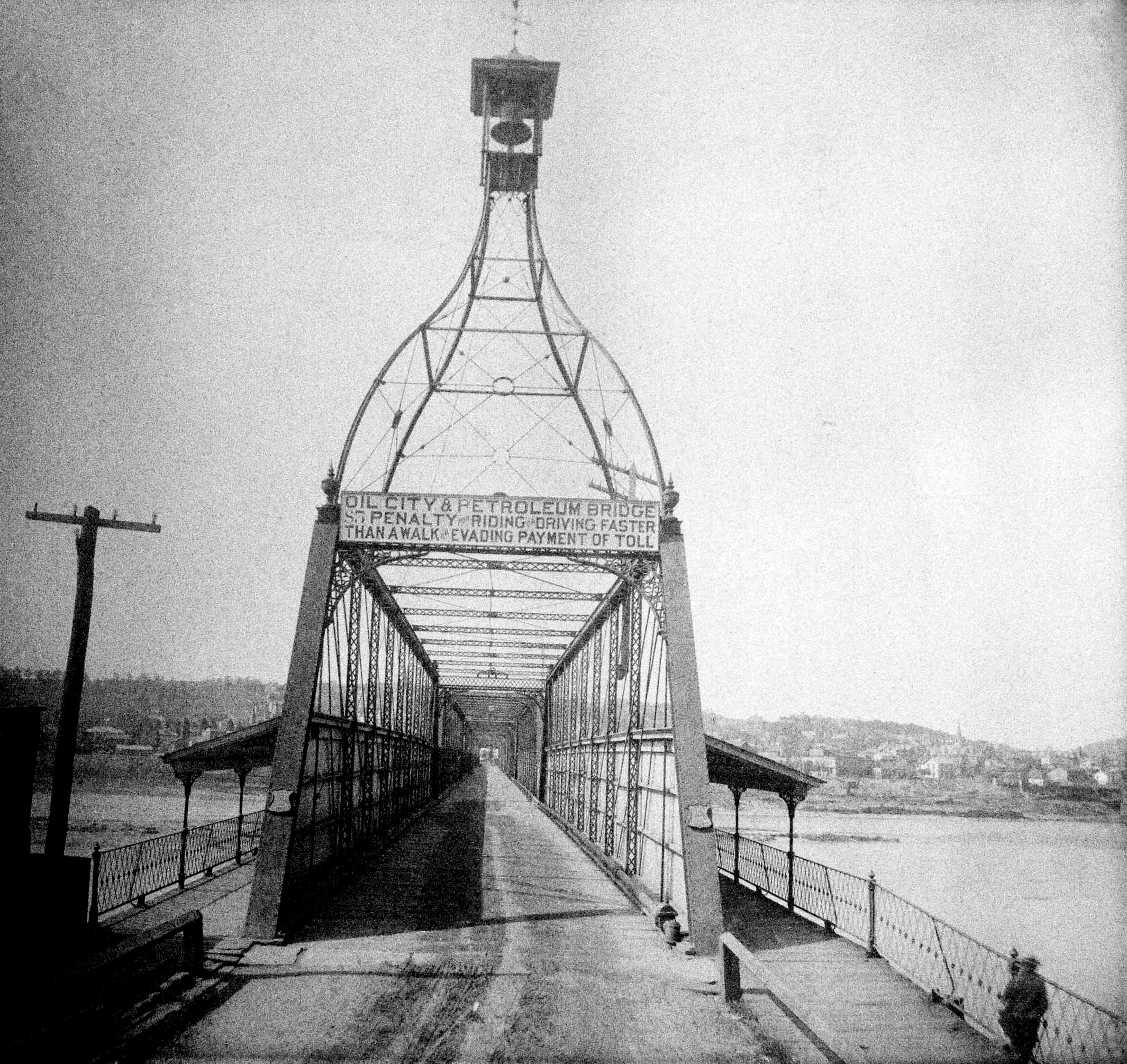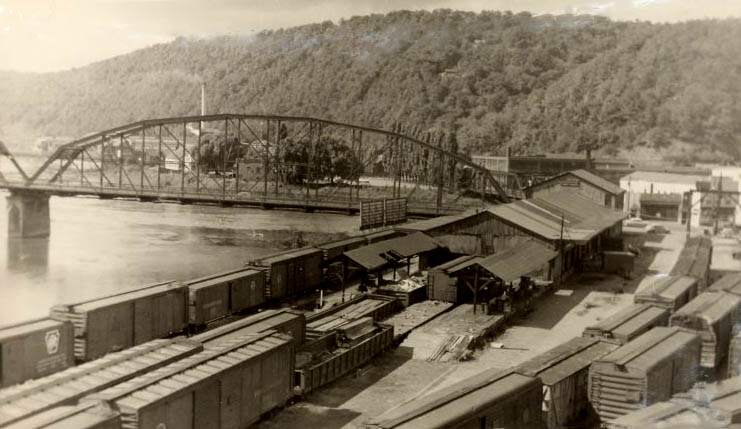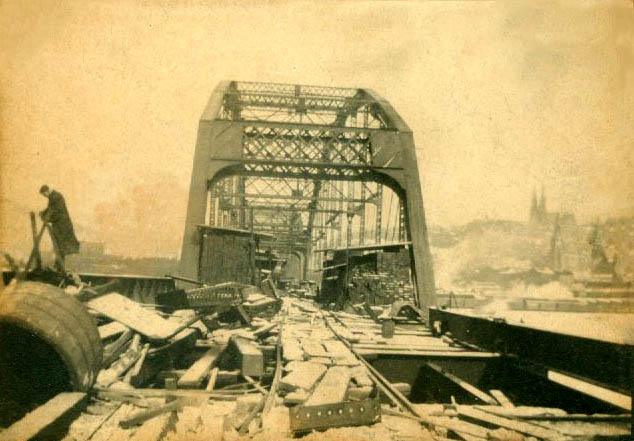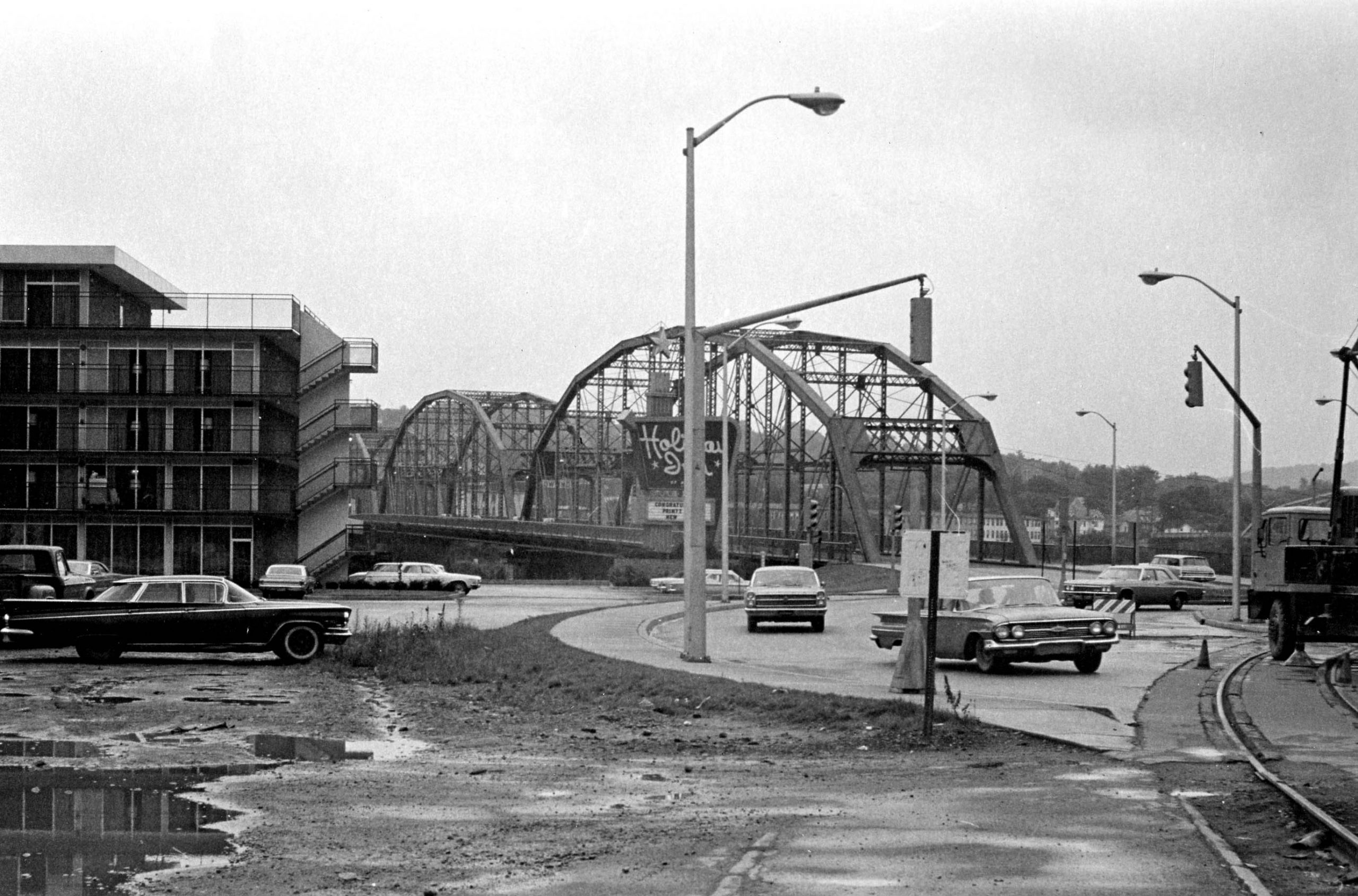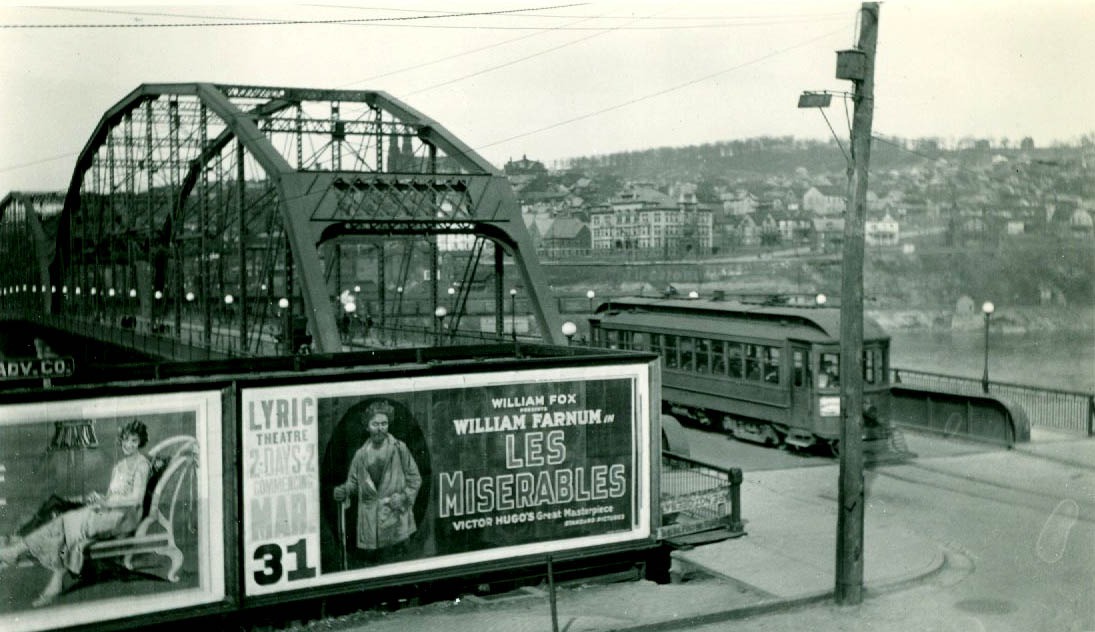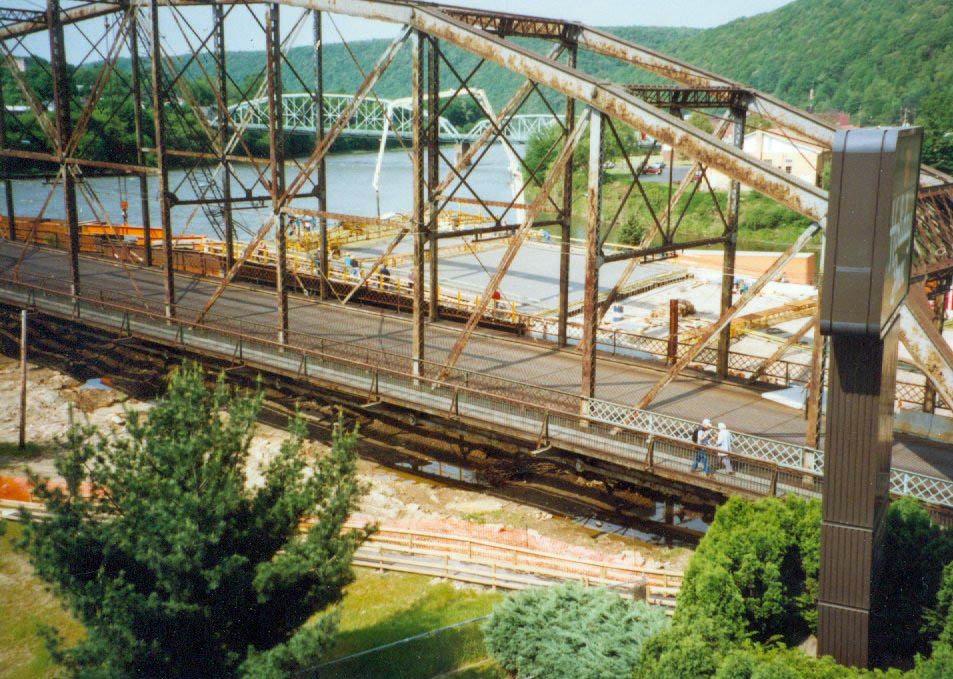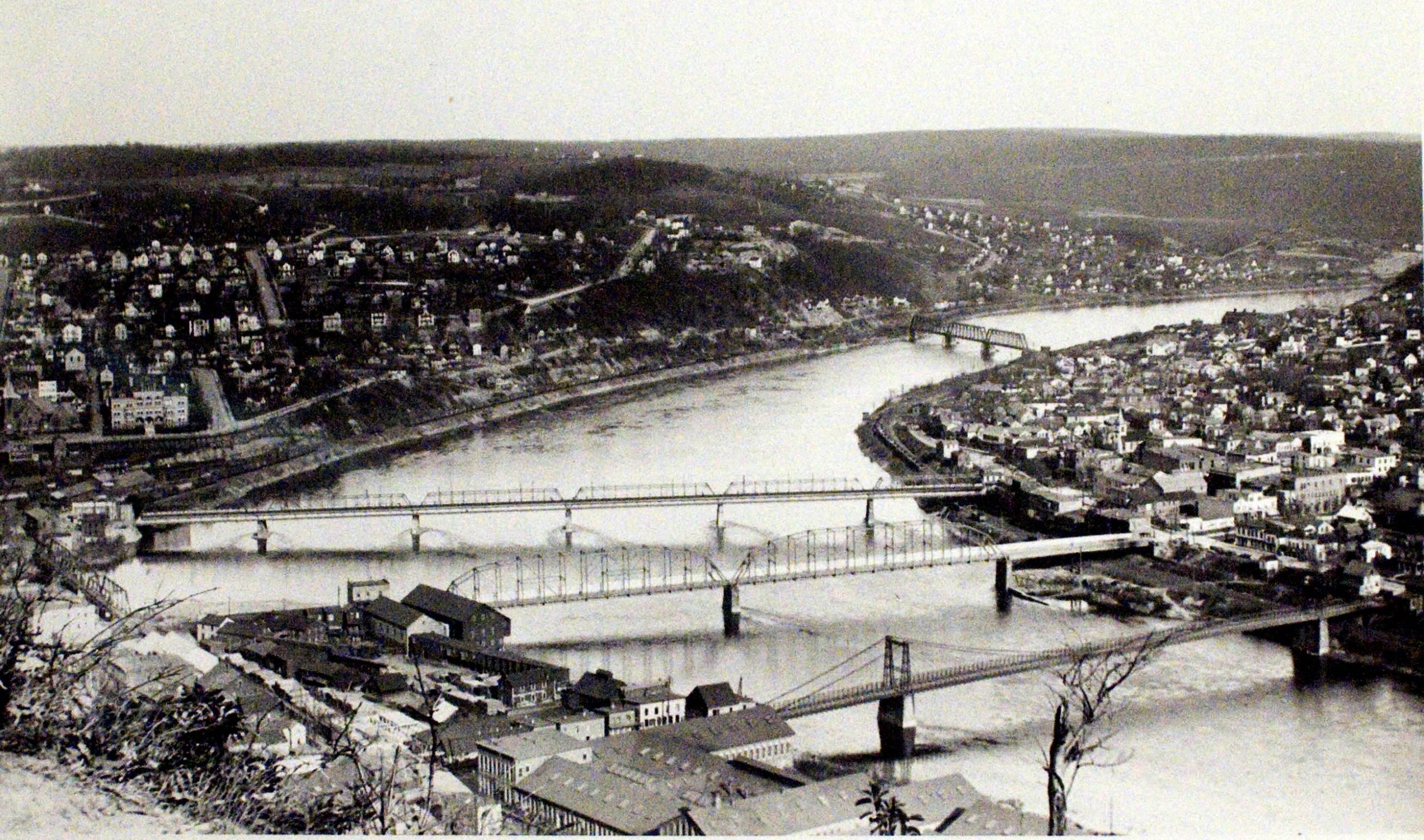State Street Bridge
- Judy Etzel
- May 27, 2022
- Hidden Heritage
- 6787
Efforts to build the first bridge across the Allegheny River at Oil City began in 1863 as more families settled on both sides of the river and commercial trade ranging from iron furnace materials to livestock quickly grew.
In the river settlement’s earlier years, travel across the waterway for people as well as goods was done via Native American canoes and settlers’ skiffs. When the Bell Iron Furnace at the mouth of Oil Creek went into operation in 1825, river traffic got even busier as flat boats transported iron ore, charcoal, and limestone from one side of the river to the other.
Soon after the iron furnace was in full operation, brothers John and Frank Halyday, members of a pioneer Oil City family, operated a large boat to handle multiple people and heavier goods across the waterway.
In 1861, a dock for a cabled ferry was built at the mouth of Oil Creek. A farmer by the name of Bastion set up a wire cable across the river, connected it to a large barge and shuttled people and materials between the two early city neighborhoods.
Within a year or two, William Lay strung a three-quarter-inch wire cable across the Allegheny River. It, too, was located near the mouth of Oil Creek. The wire was elevated 60 feet above the river to allow steamboats to pass under it. Lay’s ferry boat was large enough to transport one loaded wagon and one team of horses. He soon built a second boat that was larger and capable of carrying two loaded or four empty wagons.
The Bridge Project
In 1863, a private company was organized to construct a bridge across the river. Major stockholders in the new Oil City and Petroleum Bridge Co. were J.J. Vandergrift, John H. Coleman, H.M. Hamilton, William Ewing and William L. Lay. Construction of the $102,000 span began in 1865.
The bridge was designed to be a two-span suspension bridge but a major flood washed out the piers early in the project. The design was changed to a wood truss bridge, one that would be supported by five piers created by building timber cages filled with rocks. The south end was built several feet higher than its counterpart to allow steamboats to pass under it.
The new bridge was 1,255 feet long and 18 feet wide. At the time, it was the longest bridge over any part of the Allegheny River.
The Oil City and Petroleum Bridge opened to the public on Sept. 18, 1866. Tolls were charged: 2-cents one-way for carriage drivers, 3-cents round-trip for walkers, 5-cents round-trip for horse and rider; 10-cents round-trip for a two-horse carriage. A few cents were added to tolls for sheep, oxen, hog or horse herders.
And, there were penalties levied against bridge travelers who flouted the rules. A $5 penalty was charged for: evading the payment of a toll; carrying any fire or lighted cigar or pipe on the bridge or discharging firearms near it; riding or driving at a faster gait than a walk.
The original span was of an open air design but that soon changed to accommodate pedestrians’ wishes. Covers were constructed over the public walkways on each side of the bridge.
In 1885, there was a campaign to build a larger and stronger bridge. The effort was prompted by the extensive presence of decay in the wood girders but also because of the danger of fire from steam locomotive train engines moving back and forth on tracks beneath the bridge.
Work began to build a new iron bridge. The span, funded by $76,000 in private funds, was built in four phases over a period of three years. The bridge featured a tall bell tower, designed to be an alarm for the city fire department, and covered sidewalks.
Located off the north end of the bridge were the sprawling Pennsylvania Railroad and Erie Railroad freight stations. The south end led directly onto the commercially developed State Street.
New Ownership
In 1903, the bridge company that owned the span dissolved and the bridge was sold to the county. Less than a decade later, a new bridge would be built at the same spot.
A steel girder bridge was constructed from 1911-1912 to replace the iron bridge. It was renamed the State Street Bridge. The decking was steel mesh on both the two-lane roadway and the dual pedestrian walks.
The construction of the new bridge did not happen without controversy. It was designed as a concrete bridge but in 1910, a team of experts in Pittsburgh advised the county that “concrete bridges are only in the experimental stage and … consequently a steel structure should be constructed,” reported The Blizzard newspaper.
The newspaper argued in an editorial that steel was obviously chosen over concrete because the Pittsburgh-based consultants did business in “the steel city.” A concrete bridge was less expensive and they were being “built all over the country,” argued a newspaper editorial on Jan. 11, 1910.
There was also discord over the width of the new bridge. The county commissioners wanted the span to be narrower than what the design called for. However, Oil City officials argued a narrower thoroughfare would be inadequate and said the old bridge width had not allowed “heavy team travel.”
Changing the design, insisted the city, would be “a great inconvenience and cause delays” while a new bridge design with a narrower width would be “calamitous.” The city won the argument for a wider roadway. However, the county opted for a steel bridge as opposed to a concrete one.
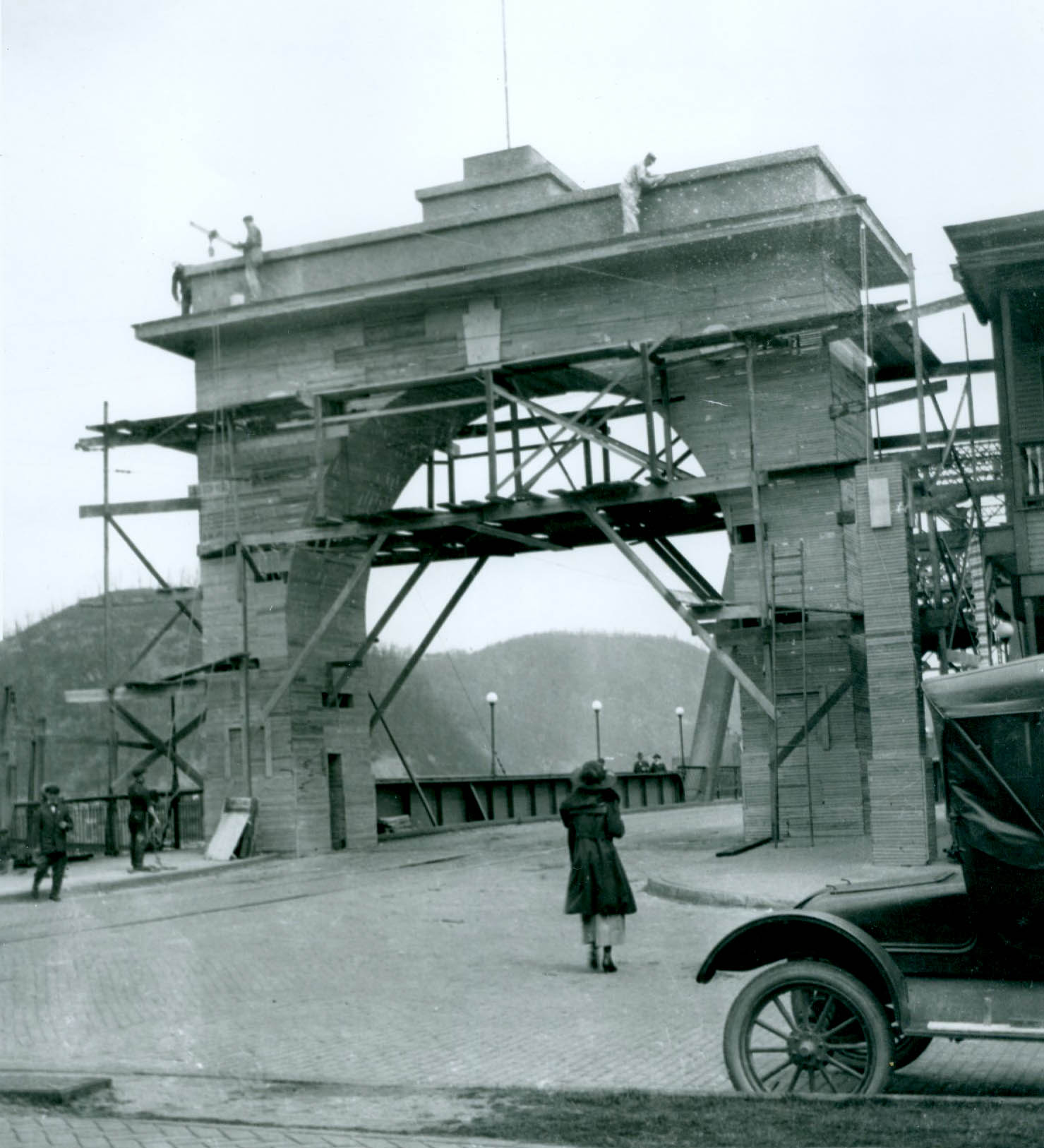
One More Bridge
In 1989, the county announced a new bridge would be built to replace the aging State Street bridge. The $10 million replacement span would be 1,200 feet long and 36 feet wide. It would be built just a few feet downstream from the old bridge and would take 18 months to construct.
The new concrete bridge, renamed Veterans Bridge, opened on Nov. 9, 1990. Soon after, the old steel girder span was dismantled. About 95 percent of the new bridge costs were paid by PennDOT and the Federal Highway Administration. The county picked up the rest of the tab.
While the south end of the county-owned bridge remained relatively unchanged, the north end had been transformed during a major downtown redevelopment project. The old train freight stations had been torched in a controlled fire by the city fire department on July 5, 1962. A new Justus Park and a Holiday Inn were built on the site.
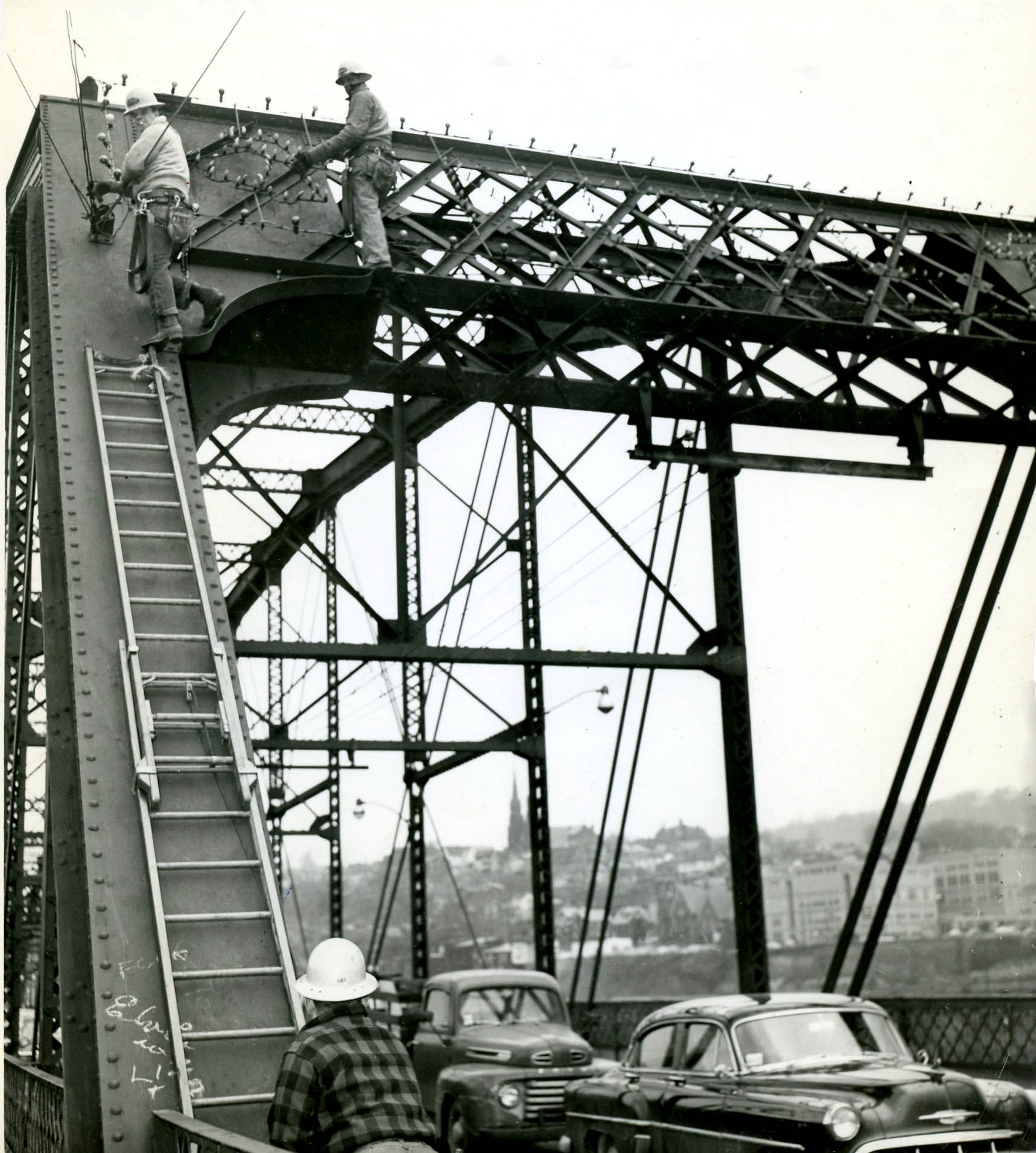
Other Bridges
Three other bridges crossed the Allegheny River at Oil City.
In 1876, a steel suspension bridge just a few hundred yards downriver from the Oil City and Petroleum Bridge was opened to the public. The toll bridge was owned by the Venango Bridge Co. and was designed by the Roebling & Sons Company of New York City. The company was famous for its Brooklyn Suspension Bridge. It was later rebuilt as a steel truss bridge. That structure was removed in 1995 and a new concrete bridge was built. It is known as the Petroleum Street Bridge.
In 1893, the Relief Street Bridge was completed. It ran from the bottom of Relief Street on the North Side and connected to the opposite shore. It was built primarily for streetcar traffic and featured two sets of tracks and a covered sidewalk.
In 1869, a wooden railroad bridge was built from Siverlyville across to the South Side. It was replaced by a steel span in 1890 and then rebuilt again in 1930. It is called the Wye Bridge to reflect the Y-shaped steel design.
Written by Judy Etzel with research by Kay Dawson and design by Natalie Cubbon.
HIDDEN HERITAGE IS SPONSORED BY:
Oil Region Alliance
Gates & Burns Realty
Support This Project
Donations to the library are appreciated to help offset printing costs & make this project possible! Want to become a sponsor? Email us at promotions@oilregionlibraries.org to get started!
Make a Donation
